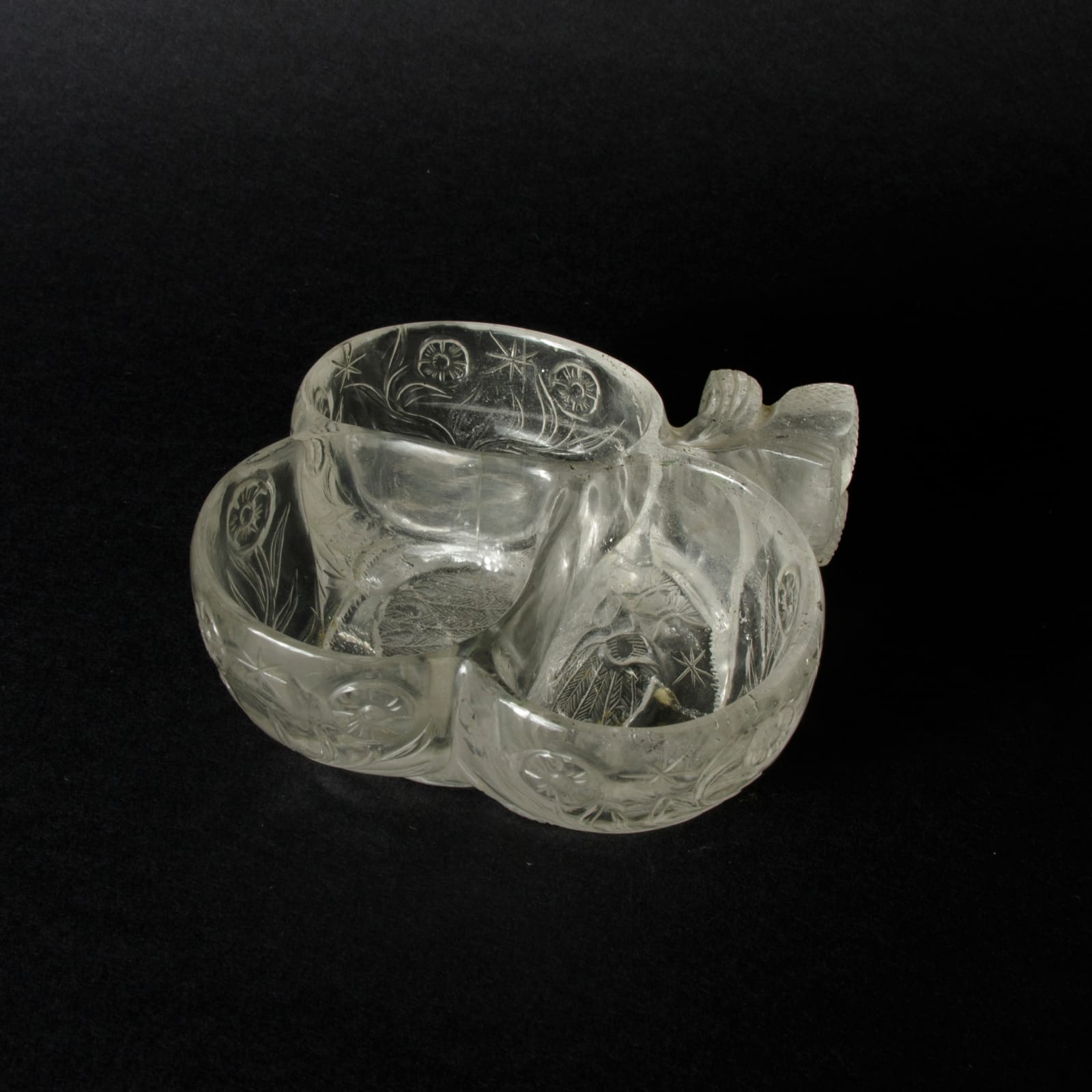A Mughal Carved Rock Crystal Relish Dish, 18th-19th Century CE
Rock Crystal
height 10.5 cm
height 4 1/8 in
height 4 1/8 in
ES.8674
A Mughal rock crystal relish dish, divided in three parts, recalling the shape of a leaf. Fashioned in rock crystal, with a smooth, polished interior and a flower and foliage...
A Mughal rock crystal relish dish, divided in three parts, recalling the shape of a leaf. Fashioned in rock crystal, with a smooth, polished interior and a flower and foliage design carved in relief and polished around the outside.
The decoration of the present bowl is a great example of the Mughal fascination for nature, as highlighted by the use of floral motifs in low relief. The Mughal dynasty was founded in 1526 when Babur, a Central Asian Muslim prince, followed the example of his ancestor Timur (d.1405) and invaded the land he knew as Hindustan (the Indian subcontinent). Babur's languages were Turki, in which he wrote his memoirs, and Persian, the language of culture across Iran and Central Asia.
The "golden age" of Mughal art covered the period from about 1580 to 1650. Hindu and Muslim artists and craftsmen from the northern regions of the Indian subcontinent worked with Iranian masters in the the royal workshops. The combination of their different traditions and the technological and cultural transfer between different artisans resulted in a new distinctive style which included elements of all these different cultures.
The decoration of the present bowl is a great example of the Mughal fascination for nature, as highlighted by the use of floral motifs in low relief. The Mughal dynasty was founded in 1526 when Babur, a Central Asian Muslim prince, followed the example of his ancestor Timur (d.1405) and invaded the land he knew as Hindustan (the Indian subcontinent). Babur's languages were Turki, in which he wrote his memoirs, and Persian, the language of culture across Iran and Central Asia.
The "golden age" of Mughal art covered the period from about 1580 to 1650. Hindu and Muslim artists and craftsmen from the northern regions of the Indian subcontinent worked with Iranian masters in the the royal workshops. The combination of their different traditions and the technological and cultural transfer between different artisans resulted in a new distinctive style which included elements of all these different cultures.
